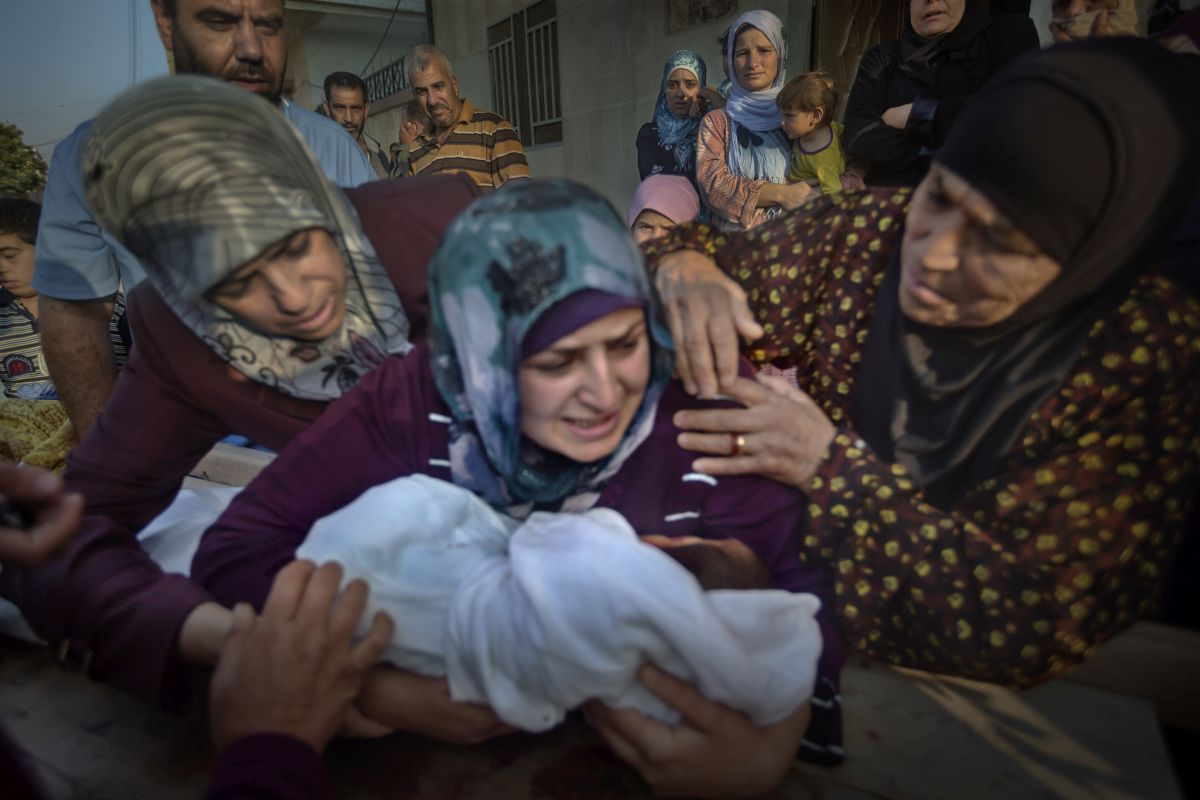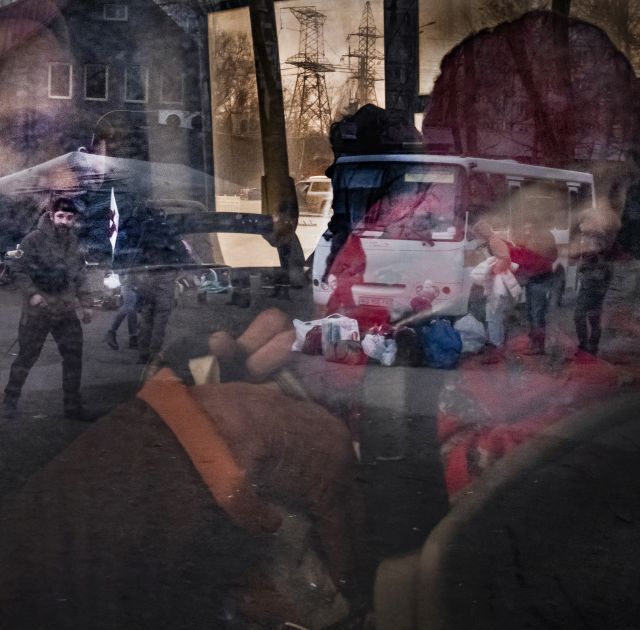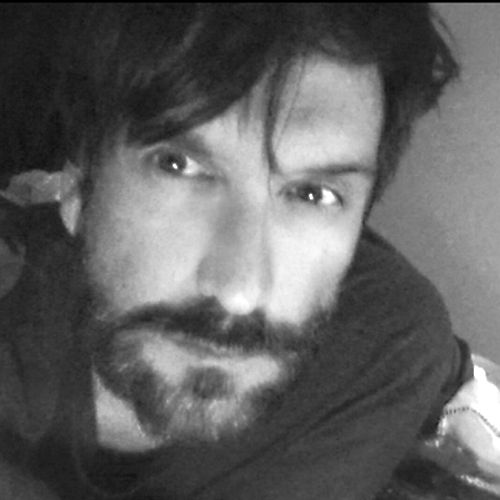Ricardo Garcia Vilanova is the only photojournalist to have been in Syria since the outset of the civil war, in November 2011, where he witnessed the first protests against the Bashar al-Assad regime. His books Fade to Black and The Libyan Crossroads chronicle the rise and fall of Isis in Syria, Libya and Iraq. The war has come closer from these more far-off countries to the more neighbouring country of Ukraine.
Contrasting pictures of Syria and Ukraine, Garcia Vilanova shows that war is the same everywhere, and entails threat, destruction and flight. His photographs are etched on the viewer’s memory thanks to the photographs’ composition, and the feeling and emotion they evoke. It is through this emotion that the photographer seeks to reflect on the aftermath of war and, most of all, to zoom in on the population’s suffering.

Syria (2012). A sniper killed five-year-old Yazan Gassan Rezk with a shot to the head at a checkpoint in the city of Qusayr. The mother cried holding the body of her son in her arms before the funeral. That same day, 6 people died and 37 were wounded in the bombings that ripped through the city surrounded by forces loyal to Bashar al-Assad. The city was a rebel stronghold in the Homs province.
© Ricardo Garcia Vilanova
Ukraine. Grave of a fallen soldier at the Berkovetskaya cemetery on the outskirts of Kyiv. The cemetery is riddled with mines, as a result of the fighting taking place in this area (15 March 2022).
© Ricardo Garcia Vilanova
Syria (2012). The floor of the lobby was used as an emergency room in the Dar al-Shifa hospital in Aleppo. The upper floors had been destroyed by bombing. There were only five doctors for some 400,000 inhabitants, including Yasser Darwish, who stayed in the city from the outset of the war in July until Isis arrived. He had to leave Aleppo as he was on a list of their most wanted people to murder.
© Ricardo Garcia Vilanova
Ukraine. A woman is evacuated from the city of Irpin in an ambulance following a Russian army attack (11 March 2022).
© Ricardo Garcia Vilanova
Syria (2013). Of the approximately 400 people who had taken shelter in caves in the Idlib province, more than half were children. They asked that their location not be disclosed for fear that the army might attack them. However, the caves’ surroundings were bombed. The refugees did not have enough food, medicine or clothing to protect them from the winter cold, but at least the children were able to attend classes taught by volunteers.
© Ricardo Garcia Vilanova
Ukraine. In Severodonetsk, in the Donbas region, the shelling is constant. A large number of families are currently living in a former USSR fallout shelter built in 1966, including fifteen children (May 2022).
© Ricardo Garcia Vilanova
Syria (2013). One of the main streets in the city of Deir ez-Zor, divided by checkpoints that separated the city into areas managed by the Free Syrian Army (FSA), Jabhat al-Nusra (Al Qaeda in Syria) and Isis. The other half of the city was under the regime of Bashar al-Assad.
© Ricardo Garcia Vilanova
Ukraine. Considered Ukraine’s second-largest city, Kharkiv has witnessed relentless bombardment by Russian forces since the start of the war in mid-February. The barrage of shelling has laid waste to this enclave (13 May 2022).
© Ricardo Garcia Vilanova
Syria (2012). Soldiers of the Free Syrian Army (FSA) in heavy combat with the troops of Bashar al-Assad in the Ancient City of Aleppo.
© Ricardo Garcia Vilanova
Ukraine. Ukrainian army soldiers react to the sound of gunfire from the Russian army as an elderly woman in a wheelchair is evacuated from the city of Irpin, (11 March 2022).
© Ricardo Garcia Vilanova
Syria (2015). A Kurdish woman and her children crying at the grave of the husband and father, respectively, killed in the fighting to liberate Kobane.
© Ricardo Garcia Vilanova
Syria (2018). Although Raqqa had already been liberated from Isis when this photograph was taken, women still wore the niqāb, a garment that Isis made mandatory throughout its caliphate. A woman walked through the ruins of the destroyed former capital of the Islamic State’s caliphate.
© Ricardo Garcia Vilanova
Ukraine. Evacuation of civilians in the city of Irpin following the entry of Russian soldiers. Ukraine regains control of the city in late March (13 March 2022).
© Ricardo Garcia Vilanova
Syria (2019). Mohamed (at the wheel), a pharmacist from Hajin (Deir ez-Zor), his wife and three children left the city where they lived under Isis control, during the fighting against the Syrian Democratic Forces (SDF) that took place in the last battle that marked the demise of the caliphate.
© Ricardo Garcia Vilanova
Ukraine. After being escorted by a Ukrainian army soldier, several people wait inside a vehicle to be able to leave the area that forms the front line of the besieged city of Irpin (7 March 2022).
© Ricardo Garcia Vilanova
Syria (2021). Funeral of members of the Gulo family, who belonged to the Kurdistan Workers’ Party (PKK). They were killed by a drone in the city of Qamishli in northeastern Syria.
© Ricardo Garcia Vilanova
Ukraine. Children from an orphanage in Severodonetsk (in the Donbas region) are evacuated on a special train to Kyiv (February 2022).
© Ricardo Garcia Vilanova
Syria (2021). Syrians in the Al Hawl refugee camp, hailing from the city of Deir ez-Zor, from where they had to flee due to the fighting that devastated the city for several years.
© Ricardo Garcia Vilanova
Ukraine. Funeral of Sergeii Goncharenko (52 years old), Hispanist, Russian translator and poet, killed in Irpin by Russian artillery (19 March 2022).
© Ricardo Garcia Vilanova
The newsletter
Subscribe to our newsletter to keep up to date with Barcelona Metròpolis' new developments






